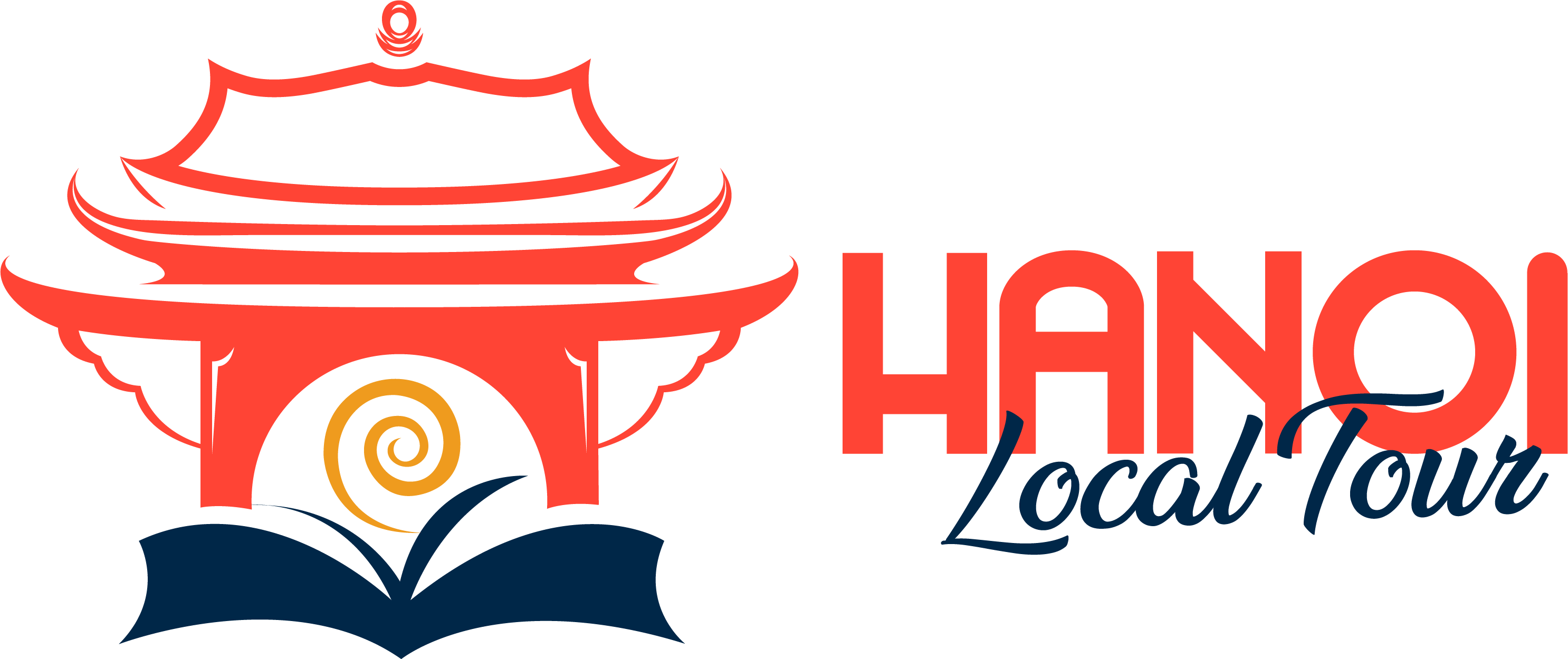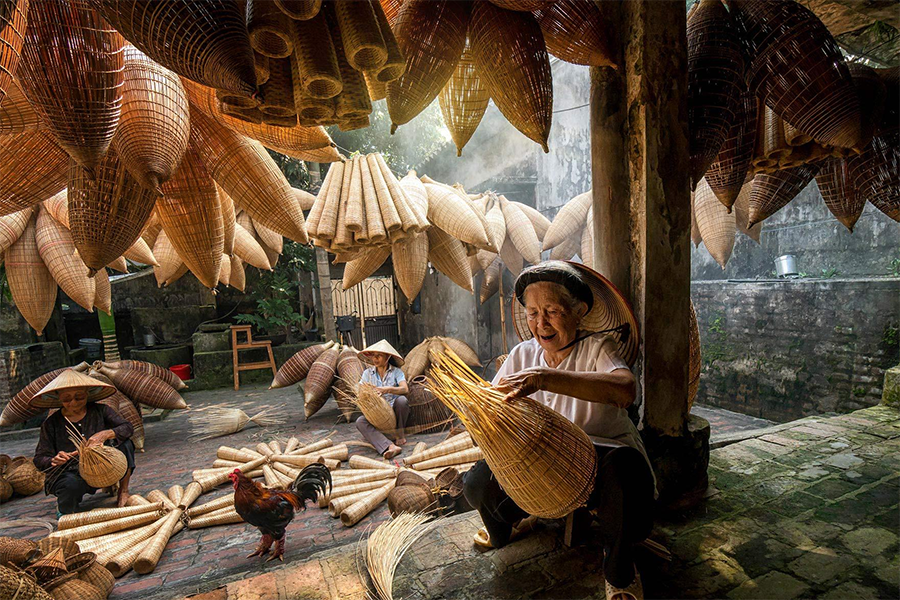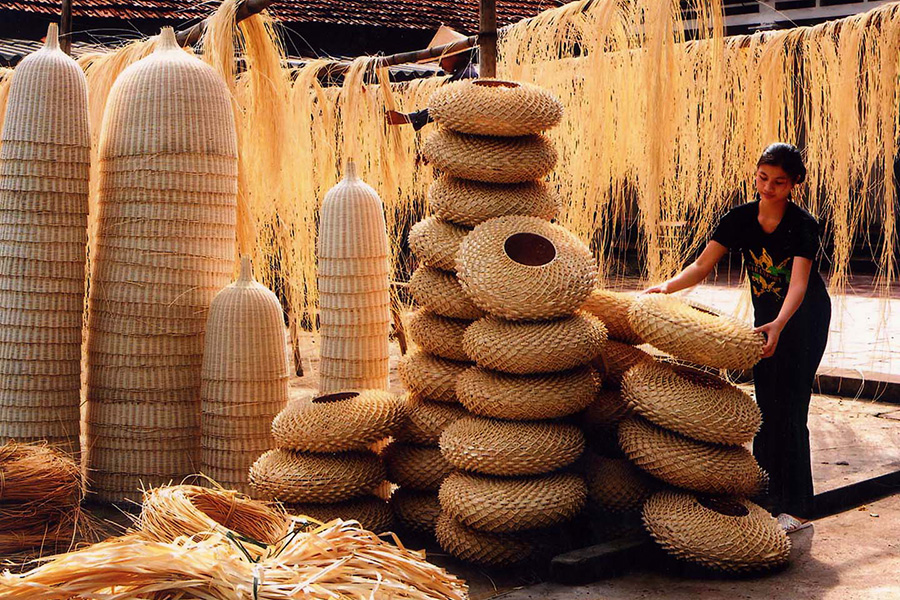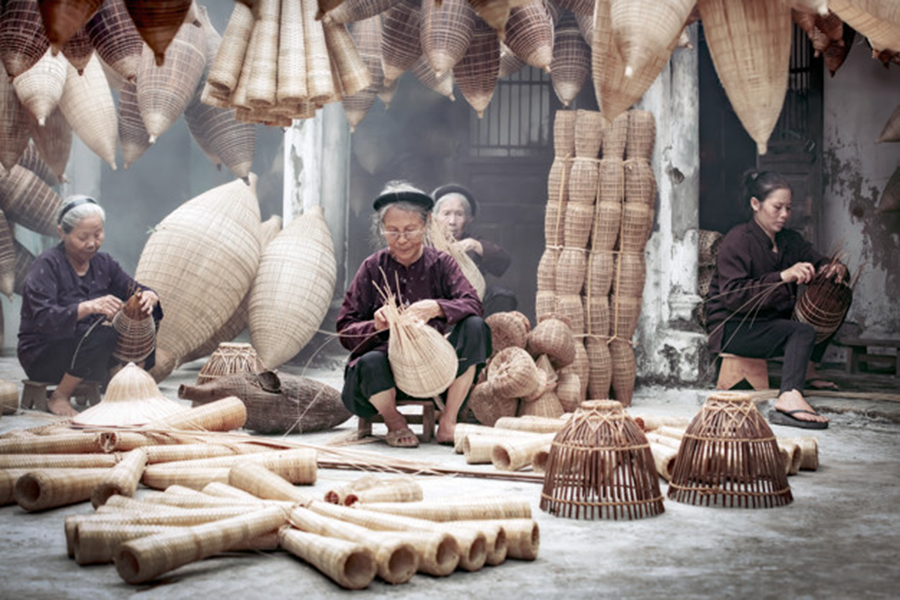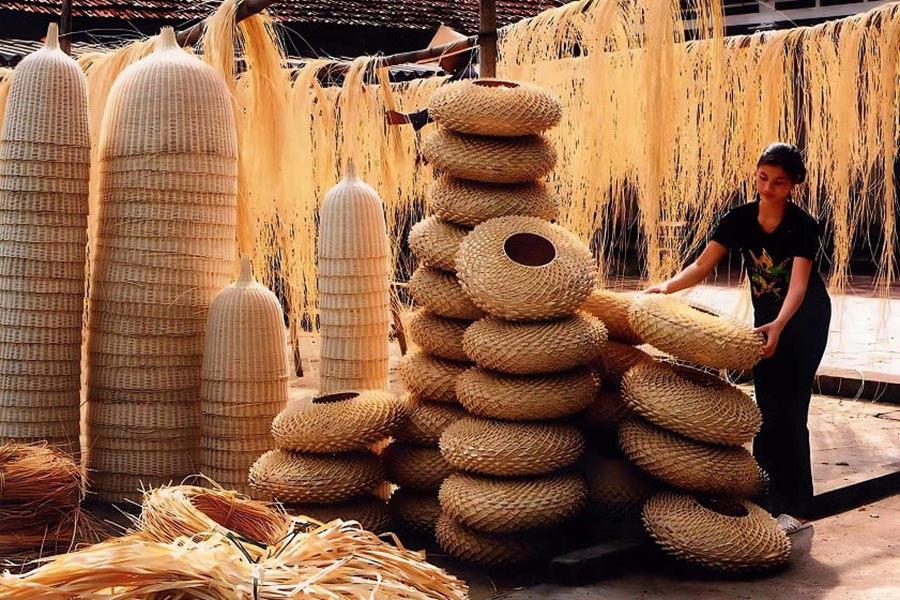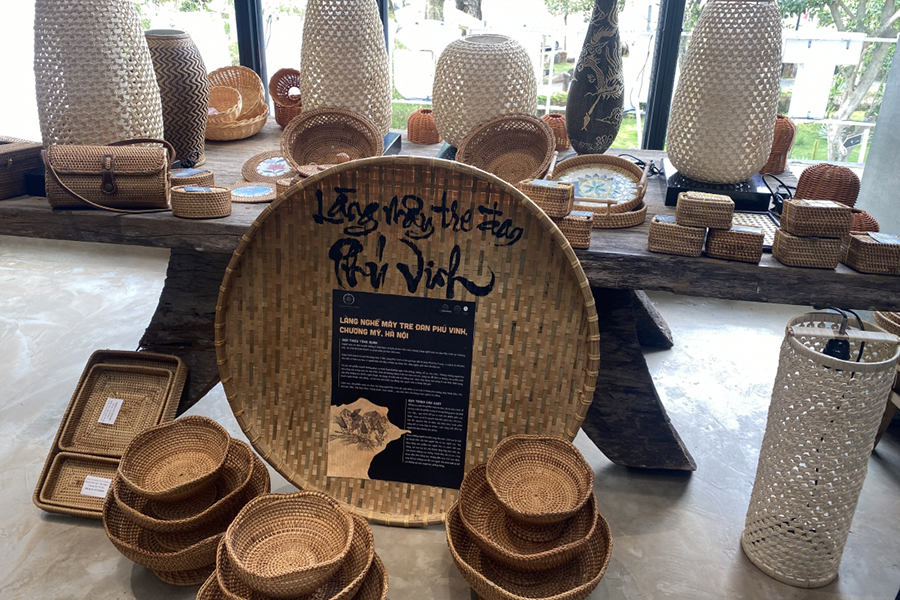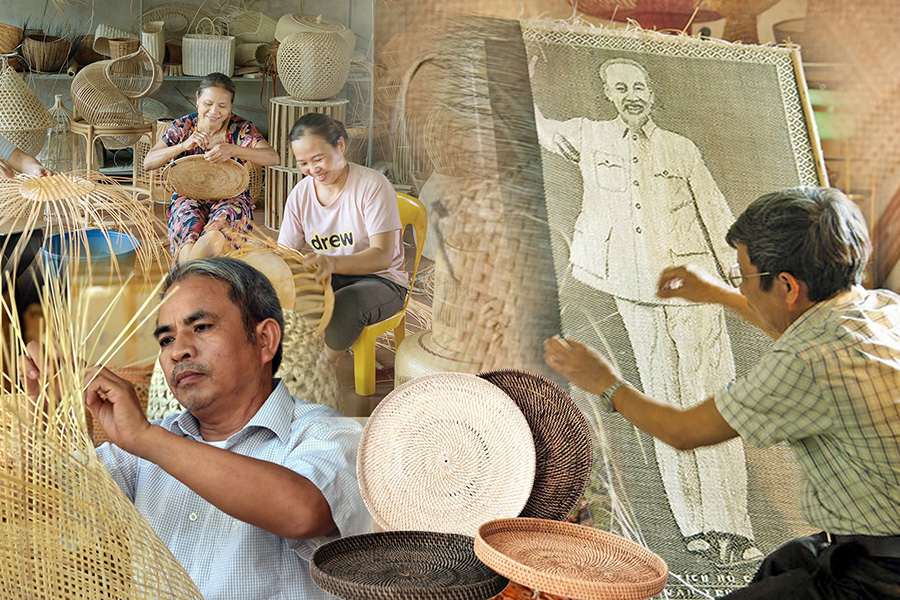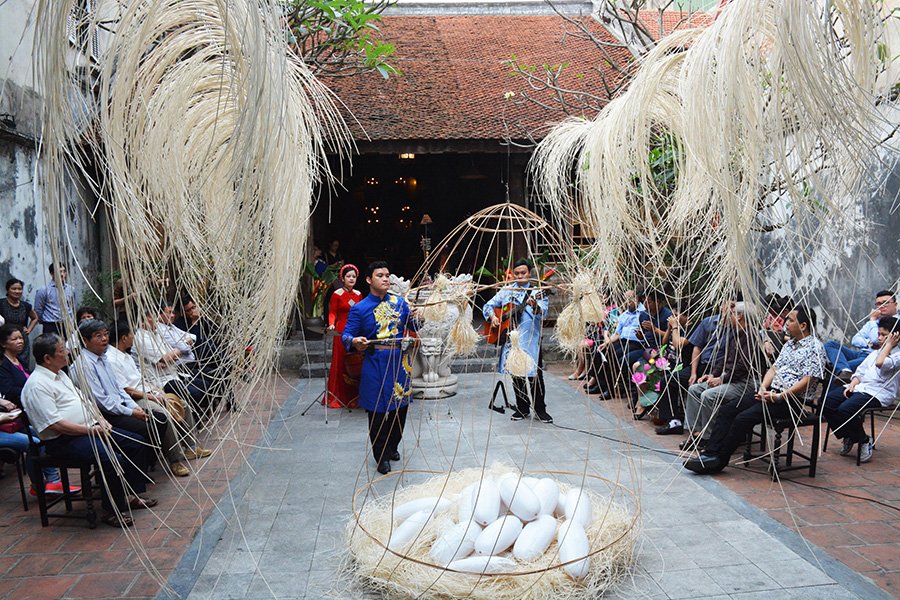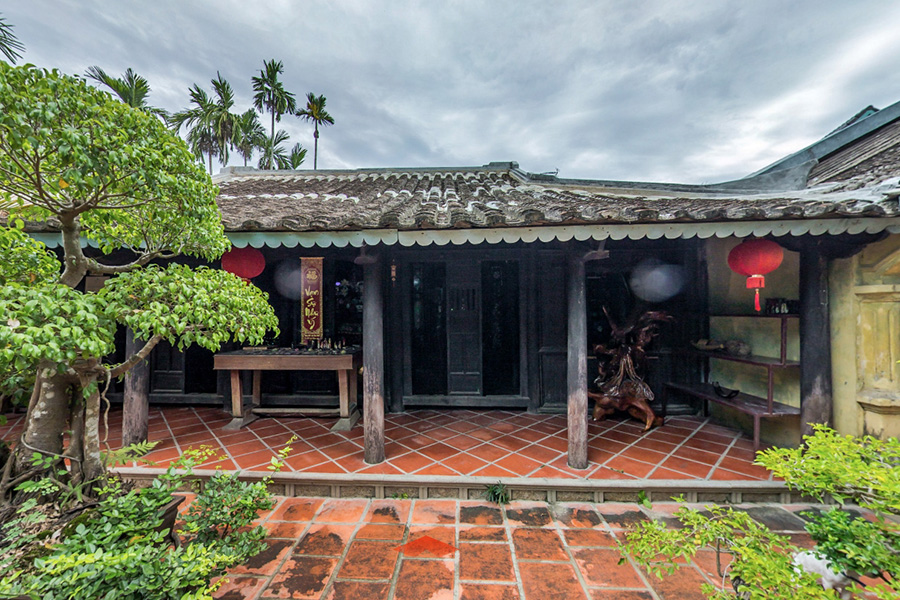Phu Vinh Bamboo and Rattan Village is not just a renowned traditional handicraft village but also a captivating destination for Hanoi tourism. Exploring this craft village, visitors will delve into the artistry of high-level bamboo weaving, infusing a distinctive and lively essence into each product.
Introduction to Phu Vinh Bamboo and Rattan Village
Where is Phu Vinh Bamboo and Rattan Village?
Phu Vinh Bamboo and Rattan Village is a renowned traditional handicraft village in Hanoi. Located in Phu Nghia commune, Chuong My district, along the National Highway 6A connecting Hanoi and the northern mountainous provinces, the village is situated approximately 27 kilometers southwest of the city center.
History of development of Phu Vinh Bamboo and Rattan Village
Phu Vinh Bamboo and Rattan Village in Hanoi is renowned for its traditional bamboo weaving craft, boasting a history that spans nearly 400 years. Established in 1700, initially known as Phu Hoa Trang, which translates to heaven’s blessing for skilled artisans, the village has been home to generations with remarkably artistic and skillful hands in weaving bamboo.
Over the years, the expertise has been passed down from “father to son,” and successive generations in Phu Vinh Bamboo and Rattan Village have cultivated a profound connection with bamboo and rattan, mastering all the properties of these plants. It is from this rich legacy that the art of bamboo weaving has flourished, solidifying its status as the traditional craft of Phu Vinh Bamboo and Rattan Village.
What is special about Phu Vinh Bamboo and Rattan Products?
Each craft village in Hanoi is known for its distinctive products. Van Phuc Silk Village is famous for its luxurious and delicate silk products, while Bat Trang Ceramic Village is recognized for its ancient and simple space, along with exquisite ceramic and porcelain items. Phu Vinh Bamboo and Rattan Village in Phu Nghia commune (Chuong My district) is no exception. Thanks to the skillful hands of artisans, the woven bamboo and rattan products created here are meticulous, featuring unique and intricate patterns, incredibly beautiful.
To achieve such products, artisans must have a deep understanding of the materials and carefully go through the stages of selecting, processing, and crafting. After purchasing the raw materials, they are sun-dried and soaked in chemicals for about 10 days to prevent insects. The bamboo is then crushed, peeled, polished, and dried. Subsequently, the bamboo is placed in the furnace, using straw, grass, or bamboo leaves to obtain the core, which is then cooled and straightened.
The next crucial step is the assembly of the products. Experienced artisans choose the raw materials to cut into pieces that are suitable for the intended product. The color of the products varies, including the natural color of bamboo or those enhanced with PU paint.
The bamboo processing technique also demands considerable experience. Bamboo must be cut into 3-meter sections, straightened, and then harvested for the core. The process of splitting bamboo requires high-level craftsmanship, ensuring that the bamboo strips are evenly distributed. Thicker bamboo strips are used for weaving common products, while thinner strips are used for more delicate and intricate items. Depending on the size of the bamboo, the decision to split unevenly or evenly is made. The technique of splitting bamboo into thin strips, creating this type of bamboo thread, is a precious innovation.
The bamboo and rattan strands are polished for smoothness and then thoroughly dried. To create a variety of colors and ensure durability, the bamboo strips are dipped in boiling water infused with shredded bamboo leaves. This natural coloring method not only preserves the health of the artisans but also ensures colorfastness for 30-40 years.
Today, most preparation steps such as cutting, splitting, and polishing have been mechanized, but the actual weaving process still relies on manual techniques. No artisan can escape this framework. For example, if weaving a traditional sieve or basket, the artisan must select the appropriate weaving pattern, and any mistake in this process will result in a flaw.
From traditional everyday items like sieves and baskets, Phu Vinh Bamboo and Rattan Village now produce a variety of modern designs, including landscape paintings, portraits, horizontal lacquers, curtains, and lampshades, catering to the diverse market demands. Not limited to the domestic market, products from Phu Vinh Bamboo and Rattan Village have also gained popularity in the international market.
What’s good about traveling to Phu Vinh Bamboo and Rattan Village?
Visit the exhibition area of Phu Vinh Bamboo and Rattan Products
Visiting Phu Vinh Bamboo and Rattan Village, tourists will have the opportunity to admire hundreds of products, featuring a diverse range of styles and designs, such as woven mats, baskets, bowls, portrait paintings, lampshades, curtains, tables, chairs, and more. Each product showcases unique creativity and meticulous craftsmanship from the skilled artisans. This village has become a popular weekend destination in Hanoi, especially among the youth, thanks to its vibrant and artistic atmosphere.
See firsthand the production process in Phu Vinh Bamboo and Rattan Village
Processing woven bamboo and rattan demands a high level of skill from craftsmen, and each family often holds its own secrets in the trade. When you visit, you’ll have the opportunity to observe this intricate processing procedure, especially during the color creation stage. Thanks to individual techniques and secrets, the products crafted here boast a wide range of vibrant colors.
Chat with Phu Vinh Bamboo and Rattan Artisans
Visiting the bamboo and rattan weaving village in Chuong My, you’ll also have the chance to meet with craftsmen, listen to their storytelling about the village’s history, witness their skillful and graceful art performances. In their work, you can sense a profound passion for their craft. These artisans act as enthusiastic “guides,” helping you discover all the unique and fascinating aspects of the craft village.
Sightseeing of rural Village in Vietnam
Not only renowned for its traditional craft, but the scenery of this ancient village in Hanoi also exudes the tranquil atmosphere of a typical Vietnamese countryside. When you visit, you’ll immerse yourself in a serene space, admiring the green bamboo clusters under simple roofs. The sight of elderly individuals and young men and women sitting and weaving bamboo creates a picturesque scene.
Phu Vinh Bamboo and Rattan Village is a destination with deep cultural and historical significance, attracting visitors from near and far. If you have the opportunity to travel to Hanoi, don’t forget to visit this famous craft village to appreciate the unique artistic value, the pinnacle of creativity, and the meticulous craftsmanship of the artisans. Their profound love for their craft is vividly expressed through each woven bamboo product, making it a must-see cultural experience.
